|
There's an Albert Einstein quote that [all right, rather embarrassingly] I think of almost daily:
"If you want your children to be intelligent, read them fairy tales. If you want them to be more intelligent, read them more fairy tales." Of course I love that the great physicist Einstein prioritized language and literature. But what strikes me repeatedly is that he understood that intelligence about LIFE is more important than an ability to solve an equation follow a set of rules. While modern research backs up the idea that reading and being read to improves children's academic abilities across the board, I don't think that was what Einstein was talking about. He realized, I think, that there was a danger in becoming so "educated" in career-focused skills that we would forget how to be human. Being human, and being the best humans we can be, is something that has been taught through fairy tales since stories were first uttered, I imagine. (Even Jesus taught through parables!) When I began reading Mio, My Son, by Astrid Lindgren, all I knew about it was that one of my favorite authors had written it, and one of my best-book-loving-friends (it's a whole category, you all know that) loved it. In fact, after my friend Liz wrote about it for Plough magazine back in 2021, the book's popularity took off so quickly that I literally could not find a copy anywhere. Liz came to my rescue and sent me a copy for Christmas, so I'm finally just getting on the Mio bandwagon. Start searching book sales and eBay, friends, because you're going to want to join me. Briefly, Mio is an unloved orphan boy who finds himself carried away to Farawayland, where he discovers he is in fact the beloved son of the great King. He walks in the garden with his father, rides through the fields with his magnificent horse, plays in the forest with his best friend. His life is everything he only ever dreamed of—until he becomes aware of an evil that has sidled its way into Farawayland, stealing children and turning their hearts to stone. He realizes he is the one destined to fight this evil, but he doesn't know how one little boy could conquer so strong an enemy. In many ways, Mio is vastly unlike the Astrid Lindgren books I've read thus far. Even with its madcap and unrealistic adventures, Pippi Longstocking and Ronia, the Robber's Daughter are very concretely set in the real world. More so with The Children of Noisy Village. My recent favorite, Seacrow Island, reads much like much-loved vintage stories of realistic children by Noel Streatfeild or even Beverly Cleary. Mio, on the the other hand, takes all of one chapter to let you know that you have been whisked away to fairyland just like Mio was. In that sense, it immediately brings to mind the works of Tolkien and Lewis and MacDonald (especially MacDonald in tone, and especially Tolkien in theme). With a genie in a bottle and a magic sword and children whisked away by an evil knight, it's as fairy tale as fairy tales get. And yet. The Astrid-Lindgren-ness of Astrid Lindgren can't help itself. Because where Mio shines is its portrayal of a very real, very human child. Mio, in his normal longing for a father and for a friend and for a pet, is every bit as concretely (and sometimes hilariously) human as Pippi or Tommy and Annika. Like every great fairy tale (and, again, this is what I think Einstein was talking about), Mio asks important—human—questions: How do we handle the loss of ones we love? How can we do the hard things that have to be done? Is there someone who could ever love us unconditionally? It answers these questions, not directly, but by inference, and perhaps that's what makes them stick all the better. The most striking feeling I came away with after closing the cover was this: "I am loved. And that love will give me the strength to do any hard thing that needs to be done." I highly recommend Liz's article for a more thoughtfully intellectual take on this story; I'm not sure if it was a mistake or a wise move, but I read her article right before sitting down to write this, and I found that she had already articulated 90% of my thoughts so perfectly that it was futile to reiterate them! Have you read Mio already? I'd love to know your thoughts! For more Marvelous Middle Grade Monday recommendations, check out Always in the Middle!
6 Comments
Happy Marvelous Middle Grade Monday, and happy Middle Grade March! I've got such a fun line up of books I hope to read this month, share with my kids, and share with all of you (you can check out my hopefuls on Instagram), and today I'm starting with a new middle grade ghost story: The Girl in the Window, by Lindsey Hobson, published by Monarch Books.
Here's the publisher's description: When Izzy breaks a window in the creepy house next door, her summer plans suddenly go from playing baseball in the backyard to doing yard work for mysterious Mr. Johnson to pay for the damage. Just when she thinks it can't get any worse, she encounters a ghost girl with a cryptic HELP ME. As Izzy begins to unravel the mystery surrounding the girl's death, she discovers a whole new meaning to being friends... forever. What I liked: I always enjoy sibling stories, and the sibling dynamic in this was realistic and a lot of fun. It's been a while since I read a good kids-playing-baseball-in-the-backyard book, and I loved that element! (Anyone have any good recommendations of other books that fit that bill?) One of my favorite story tropes, no matter how often it may be done, is that of misjudging someone and learning you were wrong. It's such an important lesson, isn't it? One I need to be reminded of, over and over and over. I hope it's not too much of a spoiler, but that theme features heavily in The Girl in the Window. There were a few things that kept this from being a five-star read for me: I know, I know, my husband is an artist and I'm extremely picky. But I wish the publishers had gone with a different direction with the cover, which I felt didn't express the overall feel of the story very well. I also felt that the shift from not-as-spooky-as-you'd-think to very-spooky was very jarring. I'm all for fun twists, but the editor in me wanted to see more foreshadowing throughout. Overall, however, I found this to be a fun and interesting story that middle grade fans of Nancy Drew, who like a taste of the suspenseful and scary, will very much enjoy! For more Marvelous Middle Grade Monday recommendation, check out Always in the Middle. I used to be a huge fan of Young Adult books. Back in 2009, when I started reviewing books, I’d be sure that on every trip to the library, I picked up at least one book from the teen section. There was a lot I had loved about being a teenager, and it was special to see those experiences recreated on the pages of books. The circumstances were different, of course, but the feelings were there. The tension between being a child and being an adult...the fear of being asked to grow up too quickly...the pride at being able to step into the world of business and academics...the startling wonder of falling in love...
And then, somewhere along the line, the trends got darker and more intense and I no longer saw much of myself at all in those stories. Instead, the middle grade that I had always loved became more and more mature, until I mentally (and often literally) had to label them as “Early Middle Grade” and “Upper Middle Grade.” The Upper Middle Grade category had more or less replaced what YA used to be. Change is inevitable, and while I could lament this one at more length, it serves little purpose. Publishers publish what they think will sell, and the consumers determine the market. Tastes vary. I was in the minority, apparently. I thought I was alone altogether. But I’m just beginning to see a shift, a shift that tells me that more and more consumers are hoping for YA books with a little more innocent love, a little less passion; a little less violence, a little more adventure. More wonder. More newness. More overcoming of that good old teenage angst and less of letting it define us. On the front lines of this shift are the books of Owl’s Nest Publishers—a fairly new publishing house that has impressed me tremendously with the quality and content of their books. So let’s move on the actual review part of this essay, shall we, before my soap box tumbles? Thread of Dreams, by Emily Barnett, is a YA fantasy about a girl named Nova who lives in a world called Lyra—a world with no sun, where the moon shines at night and darknight is a time where evil and danger lurks. Lyra is connected to Earth through a rift that allows Lyran harvesters, such as Nova, to enter the dreams of humans and harvest moments of these dreams as threads that provide energy and power in Lyra. The humans can’t see the Lyrans—or they shouldn’t be able to. But one day Nova enters the dream of a boy named Arlo, who very much sees her and very much wants to know what she’s doing in his subconscious. Alight with the possibility that the world is not so closed off and hopeless as the Ancients of Lyra would have her believe, Nova finds a way to visit Arlo again and again...until an accident puts them both—and possibly Nova’s entire world—at risk. C. S. Lewis once said, “Even in literature and art, no man who bothers about originality will ever be original: whereas if you simply try to tell the truth (without caring twopence how often it has been told before) you will, nine times out of ten, become original without ever having noticed it.” Thread of Dreams is a good example of this. It feels wholly original and new to me. Yet it reminded me strongly of some of my favorite books: The Chronicles of Narnia, A Wrinkle in Time, even slightly of the more recent Lunar Chronicles. But it was not because Thread of Dreams was derivative in any way. Emily Barnett didn’t steal any plot points. She simply told the same truth. And some of those truths that Thread of Dreams tells are the very truths that drew me to the YA genre in the first place: Growing up means learning to let go of ourselves to find who we truly are. There is power in family and friendship and romantic love—different loves that we need at different moments. Wisdom lies in accepting oneself while still trying to better oneself. And the great, overarching truth: Love is stronger than hate. It will always overcome. Thread of Dreams releases on March 28, but you can pre-order it now from Owl's Nest, and I encourage you to do so! I highly recommend it for ages 12 (or a mature 11) and up. Happy Marvelous Middle Grade Monday, everyone! I love stories that blend old-world legends with new-world settings, so I was thrilled to read the description of the recently-released The Selkie’s Daughter, by Linda Crotta Brennan:
A richly imagined fantasy set in Nova Scotia where a young girl—part selkie, part human—must save her family... Brigit knows all the old songs and legends of Neve, the daughter of the sea god; of the warrior Finn MacCool; and of people who are not quite human. But Brigit knows the truth. It’s evident in the webbing between her fingers– webbing that must be cut. She’s the daughter of a selkie. A truth she must keep secret from everyone. But someone in her village is killing young seals. Angering the king of the selkie clan, who vows revenge. A curse that will bring storm, sickness, and death. To protect those she loves, Brigit must find a way to Sule Skerrie, the land of selkies, to confront the Great Selkie and protect the young seals from harm. Like sitting by a warm fireplace, The Selkie’s Daughter is an imaginative fantasy, steeped in Celtic mythology and rich with detail. Perfect for fans of mermaids and Studio Ghibli-esque stories. A few things I especially loved: —the setting. I suppose L. M. Montgomery got me hooked on stories set in Eastern Canada. I also have ancestors from this part of the world, so it holds a special pull for me. Linda Crotta Brennan did a brilliant job of bringing the Nova Scotia coast to life, vividly and intriguingly. —the characters. Oh, Brigit was wonderful! Heroic and bold when she needed to be, but also quiet, compassionate, and conflicted. The secondary characters are complex and conflicted as well; Alys and Margaret, Brigit’s aunt and cousin are both caring and kind to Brigit while turning a blind eye to the evil in their immediate family. I loved Peter, the newcomer to the village and Brigit’s faithful friend, as well as his uncle Agnus, the village’s Catholic priest. In a time when books are saturated with Catholic priests turning out to be the bad guys, I was touched to see Father Agnus was a priest like the ones I know: balanced, generous, and possessed of a hearty sense of humor. —the pacing. I expected a slow story, to be honest. And while I won’t say that The Selkie’s Daughter was fast-paced and adventure-packed, its perfectly drawn out drama and tension left me wanting to turn page after page. I couldn’t wait to find out what would happen next! All in all, this was a story I will heartily recommend and can’t wait to share with my children. For more Marvelous Middle Grade Monday recommendations, be sure to check out Always in the Middle! As many of you know already, I have a dear love for vintage middle grade books. So I decided once a month to do a “throwback” review of a classic/vintage/backlist title that I think deserves a little extra attention. Up first... the WWII historical novel by my beloved Hilda van Stockum: The Borrowed House.
The Borrowed House was van Stockum’s favorite of all her books; I’m not sure she could ever supplant Friendly Gables in that #1 spot for me, but The Borrowed House definitely stands out from the author’s other work. Even though the first Mitchells’ book (The Mitchells: Five for Victory) is set during the Second World War, its American homefront location removes it from much of the immediacy and danger that is ever-present in the Germany/Netherlands setting of The Borrowed House. This one...is not for the faint of heart. Don’t get me wrong. I think The Borrowed House is a masterpiece and a brilliant piece of children’s literature. But I was expecting the light-hearted romps of the Mitchells and instead got a story told from the point of view of Janna, a Nazi Youth member who believes all Jews and Slavs are evil and inferior and she herself is the part of the godlike race destined to overcome all obstacles and rule the earth. Janna is interesting and complicated and good-hearted—but she has been trained to think herself superior and above the rules. Right within the first few pages, she lies to her guardian to get out of chores she dislikes, and laughingly explains to a Nazi friend why all Jews deserve to be punished for their evil ways. AND YET. Hilda van Stockum’s mastery of her craft is fully on display in these first few chapters. Because even as we recoil at Janna’s racist, entitled ways, we witness the indoctrination she has been subjected to. We see the neglect she has suffered, making her more likely to admire the leaders of the Nazi Youth movement, who praise and welcome her. When she reunites with her parents in the second chapter, we see that this complicated nature applies to them as well. Yes, her mother has been a neglectful mother and a less than perfect wife. Yes, her father is somewhat domineering and completely brainwashed by fascist propoganda. But they’re still real people with real hurts and real struggles and real victories. This attention to detail in her characters is what makes The Borrowed House stand out. There’s not a single character, down to a random train passenger or an SS guard, who isn’t given another facet of personality for us to see. Some characters are worse upon further inspection. Many are much better. More importantly, throughout the story we are given the chance to see the weaker characters, particularly Janna of course, develop and grow. Having no foreknowledge of this story, I was completely surprised and enchanted by some of the plot twists (okay, okay, I’m a writer on the look-out for certain twists, so let’s say more honestly that I was somewhat surprised and completely enchanted) I encountered midway through the book. Without spoiling it for all of you with too much detail, Janna meets a member of the Dutch resistance, a teenage boy who is forging documents to help smuggle Jewish people and other “undesirables” out of Holland. Encountering him forces Janna to face her prejudices and assumptions head-on, as he displays the virtues she recognizes as good and true and noble, while the more acceptable German family who shares her home displays qualities she rightly recognizes as reprehensible. A lot of people hate the ending of The Borrowed House. Again, no spoilers, but I thought it was perfect. It was a mature ending for a book intended for mature young readers. We’ve already had a good helping of neglect and brainwashing and prejudice and sexual harrassment and, you know, murder. So I could handle the loss of a different sort that Janna suffers at the book’s conclusion. It broke my heart as it broke Janna’s—but hard hearts need to break to make room for the love and goodness they were intended to feel. Losses are needed to make room for true gain, for moving forward in the right direction. For more Marvelous Middle Grade Monday recommendations, be sure to check out Always in the Middle! They say don’t judge a book by its cover. I try not to. I do, however, judge most books—at least a smidgen—by their first sentence. And The Many Assassinations of Samir, Seller of Dreams begins with a five star string of words. “The first time I was stoned to death by an angry mob, I was not even a criminal.” I didn’t even mean to keep reading (I have a to-read list a mile long, after all!) but I couldn’t help myself after a sentence like that. I was immediately pulled along with Omar (soon nicknamed Monkey) and his delightful, wheedling, story-selling master Samir as they sell their wares and wheedle for their lives along the ancient Silk Road.
This story is hard to summarize without spoilers, as so much depends on you following along with Monkey’s spellbinding narration. So, just to be sure I don’t say too much, here is how the publisher took on this difficult task: This is the tale of an exciting journey along the Silk Road with a young Monk and his newfound guardian, Samir, a larger than life character and the so-called “Seller of Dreams”. The man is a scammer; his biggest skill being the ability to talk his way into getting what he wants. While that talking did save Monkey’s life, it has left a lot of people furious with Samir— furious enough to hire assassins. Monkey decides to try and save Samir from the attempts on his life—as a way to pay off his debt! If he can save Samir six times, he’ll be a free man...but will they all survive that long? I loved the drama. I loved the perfectly timed and humorously handled forays into philosophy. I loved Monkey, with his uptight and cautious ways, and I loved Samir (the Professor Harold Hill of the Silk Road, if ever there was one). And I loved the storytelling most of all. Like Nayeri’s masterpiece Everything Sad is Untrue, this book is full of beautiful scenes and beautiful sentences and beautiful sentiments. Storytellers, you have a lot to learn on its pages. Story lovers, I defy you not to be entranced. For more Marvelous Middle Grade Monday recommendations, visit Always in the Middle! If my friend and fellow writer Anna Rose Johnson says I'll like a book… I probably will. (I think she's my mysterious reader twin.) So when she recommended the author Millie Florence, of course her new book magically floated to the top of my TBR pile. I hope you'll put it at the top of yours as well! In a few words, The Balter of Ashton Harper is: delightful. Old-fashioned. Humorous. Poignant. Most surprisingly, though, for a book that is so light-hearted and funny throughout, it ends with a serious kick of absolute, profound, life-changing meaning. As it happens, I read Balter during one of those weeks where a few of the artists in my home (myself included) were feeling a little uncertain, and a lot discouraged, about the art we're trying to make. Maybe that's the reason I cried while I read the last three chapters. Or maybe it was just that good. Here's the publisher's description: Ashton Harper has three problems and two of them are his sisters. First Drusilla, the oldest, who has decided that all she cares about is muslin and courtship. Second Zizi, the youngest, a stubborn optimist who is constantly pushing her brother outside his comfort zone, whether it’s in their dancing lessons or his disbelief in magic. And third, their invitation to audition for a ballroom dancing scholarship at the prestigious Overmorrow Academy of Arts, which could be either a dream come true or a hope-crushing failure. As a proud, sarcastic realist, Ashton is betting on the latter. The Harper siblings set out for Overmorrow, but their opportunity evaporates when mysterious magical ruins wreak havoc on the travelers. Ashton is separated from his sisters, trying to make sense of a power that he thought existed only in fairytales. Soon much more is at stake than attending the school of his dreams. A story of family and ambition, The Balter of Ashton Harper is woven with whimsy, hope, and Millie Florence’s signature light-hearted depth. Honestly, I have so much to learn about life and about the craft of writing from this lovely book. I am excited to read it again very soon when I read it aloud to my kids—with so many of them hoping to pursue art as a vocation, The Balter of Ashton Harper is going right onto our homeschool required reading list.
For more Marvelous Middle Grade Monday recommendations, check out Always in the Middle! Every week or so, my ten-year-old daughter asks me, “Mama, can you tell me again about some famous people who were dyslexic?”
It’s hard…feeling the “different” kid in a big family. It’s hard watching your younger siblings excel at things you’re struggling with. Even when you have so many things you’re brilliant at. Even when you have daily reminders that everyone is different in one way or another, because that’s part of the beauty of God’s plan for human nature. So hearing about people who were different in the same way you are can be a big comfort. Hans Christian Anderson, Agatha Christie, Bobby Flay, Avi, Patricia Polacco... The list of famous people whose brains were wired like my daughter’s is not a short one. But I’m still excited when I discover another name to add to the list, and today that name is Taylor Tyng, author of Clara Poole and the Long Way Round. If Roald Dahl and Jules Verne got together and collaborated on a book, it would look a lot like Clara Poole and the Long Way Round. Quirky characters and madcap situations; exciting round-the-world adventures; little pockets of unexpected pathos that make you tear up despite yourself... It’s hard to imagine a kid who wouldn’t enjoy reading a story like this one. I can’t wait to share it with my own kids (I didn’t have a chance just yet, but I will report back in the comments with their thoughts). But first I’m going to share with my daughter this little snippet from Taylor’s website: “I want children with dyslexia to express themselves without worrying about the words. It's not spelling that makes you intelligent — it's your ideas. Don't hide behind it. Don't feel ashamed. Know that you are one of millions who, like you, see the world differently. That difference in perspective can be a huge asset to you and everyone around you... I am dyslexic. I am also a righter... well, you get the point, and that's all that matters.” (Here’s the source, and the whole page is amazing.) Speaking of tearing up despite oneself...man. Ok, enough from me. Here’s the publisher’s description of Clara Poole: Mr. Lemoncello meets the Amazing Race in this quirky high-octane middle grade around-the-world adventure. When an unintended flight over Michigan in her class science project—a lawn chair held aloft by balloons—brings her instant celebrity, Clara Poole is invited to be the spokesperson for a round-the-world hot air balloon race. But when her overprotective father, still mourning the death of his wife, refuses, in a moment of brash defiance, Clara forges his signature and runs away to Paris to take her place in the skies. If only she’d read the fine print first. Partnered with a veteran aeronaut who wants nothing to do with her, Clara faces down ten treacherous stages in a race around the world—capturing flags in the perilous mountains of Tibet; being a guest of honor at a maybe-wedding in the Saharan desert; flying through rings of fire in Hong Kong—all while learning the ropes alongside a colorful cast of international competitors. But there are more dangers than those planned as part of the contest. Someone is trying to sabotage the competition. And surviving this race means Clara must come to terms with the tragedy that set her rashly escaping to the skies in the first place, and accepting that forgiving herself isn’t a process she has to undertake alone. Gorgeous prose and winning characters combine in this quirky, often-hilarious, sometimes heart-breaking, and thoroughly captivating middle grade adventure series starter from an incredible new talent. To find more Marvelous Middle Grade Monday recommendations, be sure to check out Always in the Middle! Hello, friends! Please welcome Carolyn Leiloglou, author of Beneath the Swirling Sky, Book One of The Restorationists series. Besides being a fellow author and art-lover, Carolyn is a homeschooling mom; I discovered throughout this interview that we have a lot in common! As I write my interview questions and read responses, I like to imagine that the author and I are enjoying a cup of tea together at my kitchen table… In this case, it's probably a good thing it was actually over email, because I can guarantee my Restorationist-fan children would be keeping Carolyn busy with lots of questions of their own!
FEH: Welcome, Carolyn, and thank you for agreeing to this interview! Beneath the Swirling Sky was one of my family's favorite reads of 2023 (I reviewed it here). I also want to start out by sharing that Beneath the Swirling Sky is one of my ten-year-old daughter's very favorite books. She is dyslexic, so the act of decoding words is still a challenge for her, but she wanted a hard copy of your book after we listened to the audio version together, so she could go back and re-read her favorite parts whenever she wanted. It's been such a special experience for us to share. We are SO picky about art-themed books in my house, because my husband is a professional artist. So often, artists in literature are surrounded by a strange sort of mystique, overlooking the hard work and practice they put into their works. Your story portrayed art and artists in a way that even this very choosy family could get behind. :) Which leads to my first question: Are you a visual artist yourself? CL: Before I answer, let me just say how encouraging it is for me to hear that your daughter with dyslexia wanted a physical copy of the book! I’ve had a few families with dyslexic kids tell me their kids read and love Beneath the Swirling Sky, and it means a lot to me because two of my own children have dyslexia. I think books with adventure and character depth help pull them in (and I’m sure the illustrations help too in this case)! To answer your question, no, I’m not a visual artist myself. However, I grew up around a lot of art and familiar with artists and artistic concepts. My mom was an art major and taught high school art for several years, and my grandparents were art collectors. In fact, Uncle Leo’s house in Beneath the Swirling Sky is loosely based on theirs! FEH: Of course you cover this thoroughly and poignantly in your story, but what are some of the ways you believe art can influence the world and each individual? Do visual arts have a unique role in that? CL: One of the ways art can influence us is to bring to light beauty. It can also help you see things in a new way. Visual art specifically forces you to slow down to truly experience it, which feels like a rare gift in our hurry-to-the-next-thing culture. FEH: (Yes! I love that and totally agree. The ability art has to help us slow down is often overlooked.) The villains in your story damage art and attempt to pollute it with their evil ideas... but you also mention real-life damage to artwork. What would you say regarding those who risk the destruction of (or actually destroy) masterpieces to magnify their own voices? CL: I wonder if you’re referring to the protesters who have repeatedly assaulted various paintings over the last few years and now have apparently actually damaged one. I certainly don’t think the way for anyone to get a point across would be to harm irreplaceable paintings by some of our world’s greatest artists. It’s misguided, to say the least. But perhaps it had helped some people realize how precious these objects are. Their stunts have sent more people than ever to museums by reminding us of the frailty of art and our inability to truly protect it while also sharing it with the world. FEH: (That's a very encouraging way of looking at it! Anything that helps us to consider the value of artwork isn't a total loss.) From visual arts to word arts... Can you share a little about why you love writing and how you started writing? CL: I’ve always wanted to be a writer. I was making up poems long before I could spell, and I started writing my first novel in the fourth grade. However, somewhere around middle school, much like my main character Vincent, I lost confidence in my art. Tragically, I stopped writing stories until I had kids of my own (though I never totally gave up on poetry). It makes me sad to think about how many years I wasted not writing because I thought I wasn’t good enough. But you can never actually get “good enough” without doing the work. I hope my story inspires kids not to give up on whatever art form they love. FEH: Here is a question from my daughter, Maddie: if you could choose any of the artists you talk about in your book to illustrate it for you, who would it be? CL: Well, it’s hard to beat the amazing art that Vivienne To created! Her illustrations, especially the cover, really blew me away, and I feel so blessed that she chose to take on this project. But if Vincent van Gogh wanted to illustrate my book, who am I to say no? FEH: (We loved Vivienne's illustrations, too! They were the best part of getting a physical copy of the book after having enjoyed it on audio.) If you could host a dinner with one artist and one writer (dead or alive!) who would you choose? CL: This feels like a sneaky way to ask who my favorites are… I think I’d have to pick Vincent van Gogh for the artist because I love so many of his paintings and he had so much to say about art and life in his letters to his brother Theo. (Though I just came across a treasure trove of quotes from Henry Ossawa Tanner while researching book three, so he’s my close second). And how can I not pick C.S. Lewis as the author? I think I’d just sit back and soak in the conversation the two of them would have and just keep refilling their tea cups. FEH: Finally, what is some of the best writing advice you ever received? CL: It’s not the most talented writers who necessarily succeed. Its the most persistent. If you want to be a writer, keep at it! FEH: Thank you so much for joining us, Carolyn, and thank you for writing your beautiful story. We are so looking forward to Book 2!! CL: Thank you for having me! Book 2, Between Flowers and Bones, is up for preorder now! I can’t say how many times I’ve wished for more contemporary books like Hilda van Stockum’s The Mitchells—books with big, Catholic families having fun, doing interesting things, loving one another fiercely, and extending the love they learn at home to their wider community. Specific, much? Maybe a little. But one can hope (and get up early to write that kind of book yourself...).
I think I clicked “Buy now” on My Family and Other Skaters, by Fiorella De Maria before I finished reading the description. Big Catholic family—check. Fun and adventures—check. Love at home and love for others—check and double check. Add to that the fact that the family in question is obsessed with figure skating, have a pet alpaca, and start an at-home cafe to feed the parents of their fellow skaters, and you’ve got the recipe for a story that fits right in with Noel Streatfeild and Hilda van Stockum. The first person narrator is Rosaria, the oldest daughter of a British accountant and an immigrant writer from “a sunny island where everyone grew up believing that the British wear bowler hats, drink Earl Grey tea out of little china teacups, and recite Wordsworth poems to each other.” The voice is casual and humorous, which makes it seem decidedly contemporary—I think my personal taste leans toward the classic feel of third person narration as in van Stockum and Streatfeild, but I’m certain there will be some readers (and probably many children) who prefer the immediacy and humor. Much of My Family and Other Skaters takes place during Advent and Christmas, and revolves around the skating pantomime the children perform, making it a perfect choice for a family Advent readaloud. For more Marvelous Middle Grade Monday recommendations, check out Always in the Middle! |
About meHi! I'm Faith. I blog about books and creativity, family and faith. Welcome! Archives
November 2023
Categories
All
|
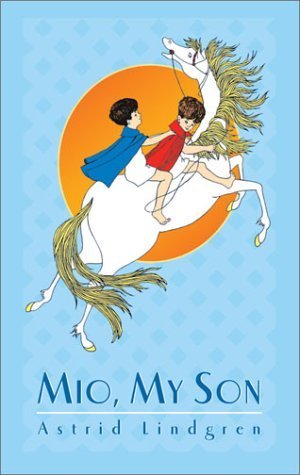
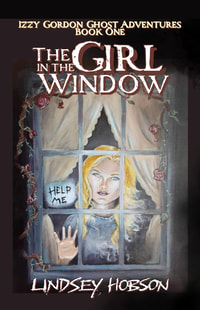
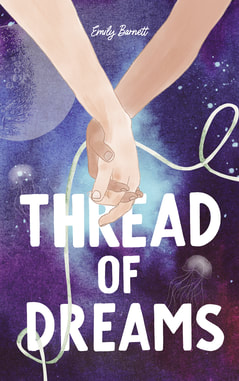
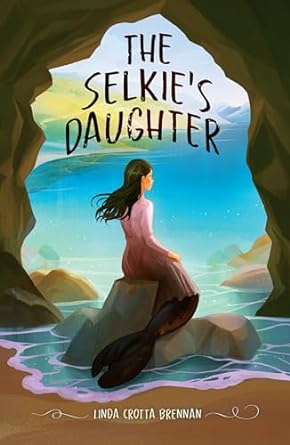
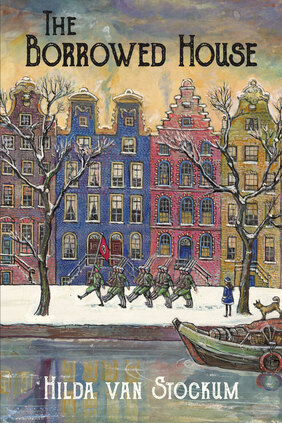
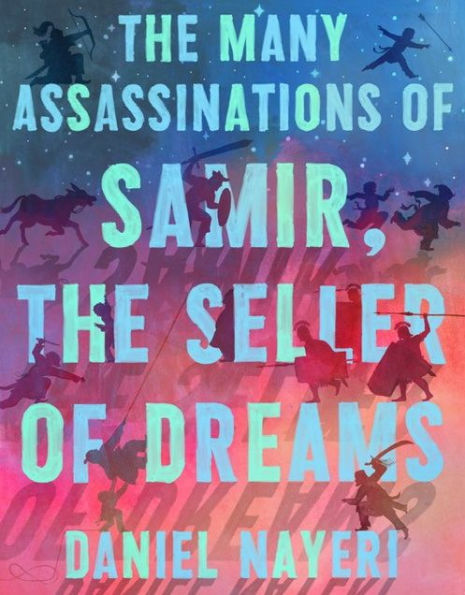
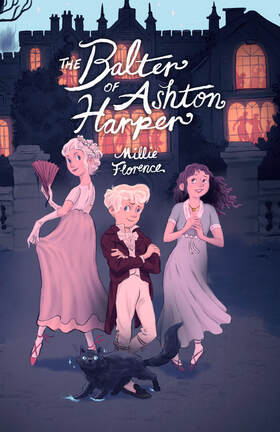
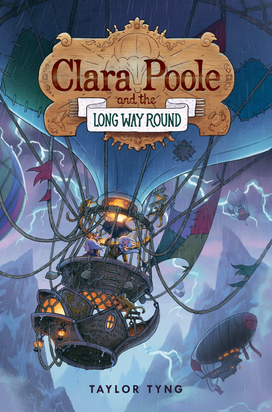
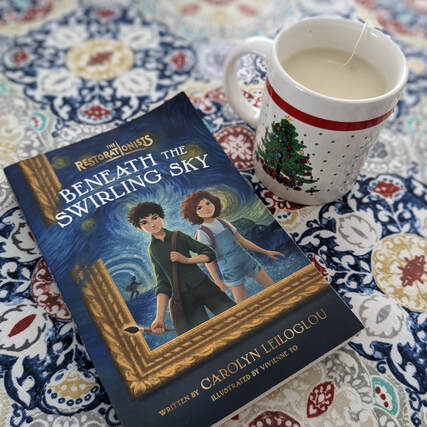
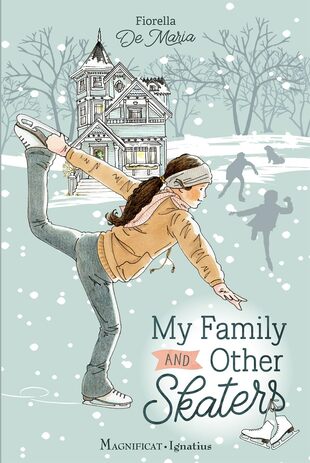
 RSS Feed
RSS Feed